Chasing Opal and Fossils in the Australian Outback
Cloaked in white dust and surrounded by expansive plains, the town of Lightning Ridge produces the bulk of the world’s precious black opal. This rare gemstone, prized for its dazzling play of color, hides out of sight in the Australian outback beneath a town roughly 450 miles northwest of Sydney. And for more than 100 years, people have come to the Ridge to find their fortune chasing precious opal.
As it turns out, these miners have been uncovering not just opal, but opalized fossils: Bones, teeth, shells, and plant material turned to opal, embedded in the ancient claystone and preserved, like the gemstones, for 100 million years under a thin veneer of sediment. Some of the opalized fossils unearthed at Lightning Ridge represent animal species found nowhere else, and they are packed with information from the Cretaceous Period — the tail end of the age of the dinosaurs. The prehistoric remains — some smaller than a fingernail — can be found edging out of mine face, or in the piles of discarded opal-bearing dirt, churned out by miners by the truckload.
“If it were not for the opal miners — many of whom have sharp eyes and regard the fossils with as great a sense of awe as paleontologists do — we would not have, or know anything about, these fossils,” says paleontologist, gemologist, and long-term resident of the Ridge, Jenni Brammall. As valuable as the fossils might be to science, miners are usually the first to lay eyes on them, and this presents a conundrum: Opal miners hold the mineral rights to whatever opal they find in their registered mineral claim, and that includes opalized fossils. When money gets tight — and it often does — a miner might destroy an opalized fossil in the hope of extracting saleable precious opal, or sell the fossil overseas where it can fetch a hefty sum. Sometimes they keep the fossils they find for their sentimental value, leaving them tucked away in private collections.
For decades, Brammall and a small group of peers have been treading a fine line to help the community understand the value of opalized fossils while urging them to donate particularly rare finds. A cornerstone of their efforts is the Australian Opal Center, which was founded in the late 1990s and has quickly outgrown its small showroom on the main street of town. The center holds the most diverse public collection of opalized fossils in the world, largely amassed through donations by opal miners, many of whom bestow their finds through the Australian Government’s Cultural Gifts Program, which offers tax deductions to donors.
But despite these efforts, countless opalized fossils are being lost to the black market, pushed out of the reach of research institutions by the highest bidder. This is why Brammall and her colleagues are ramping up their efforts, planning and designing an iconic museum and research facility to be built at the historic Three Mile opal field outside of town to showcase the unrivalled natural heritage of the region. They are also working to raise funds to purchase precious fossils unearthed at the Ridge so they can be preserved in perpetuity in a public collection, accessible to both the community and researchers.
The mining community, which is struggling through the current drought and always at the mercy of opal buyers and their temperamental tastes, recognizes that things need to change to ensure a sustainable future for the town, and they are largely supportive of the paleontologists’ efforts.
Echoing other residents, Barbara Moritz, who came to Lightning Ridge with an opal miner in the 1990s, says the new Australian Opal Center “can’t come soon enough.”
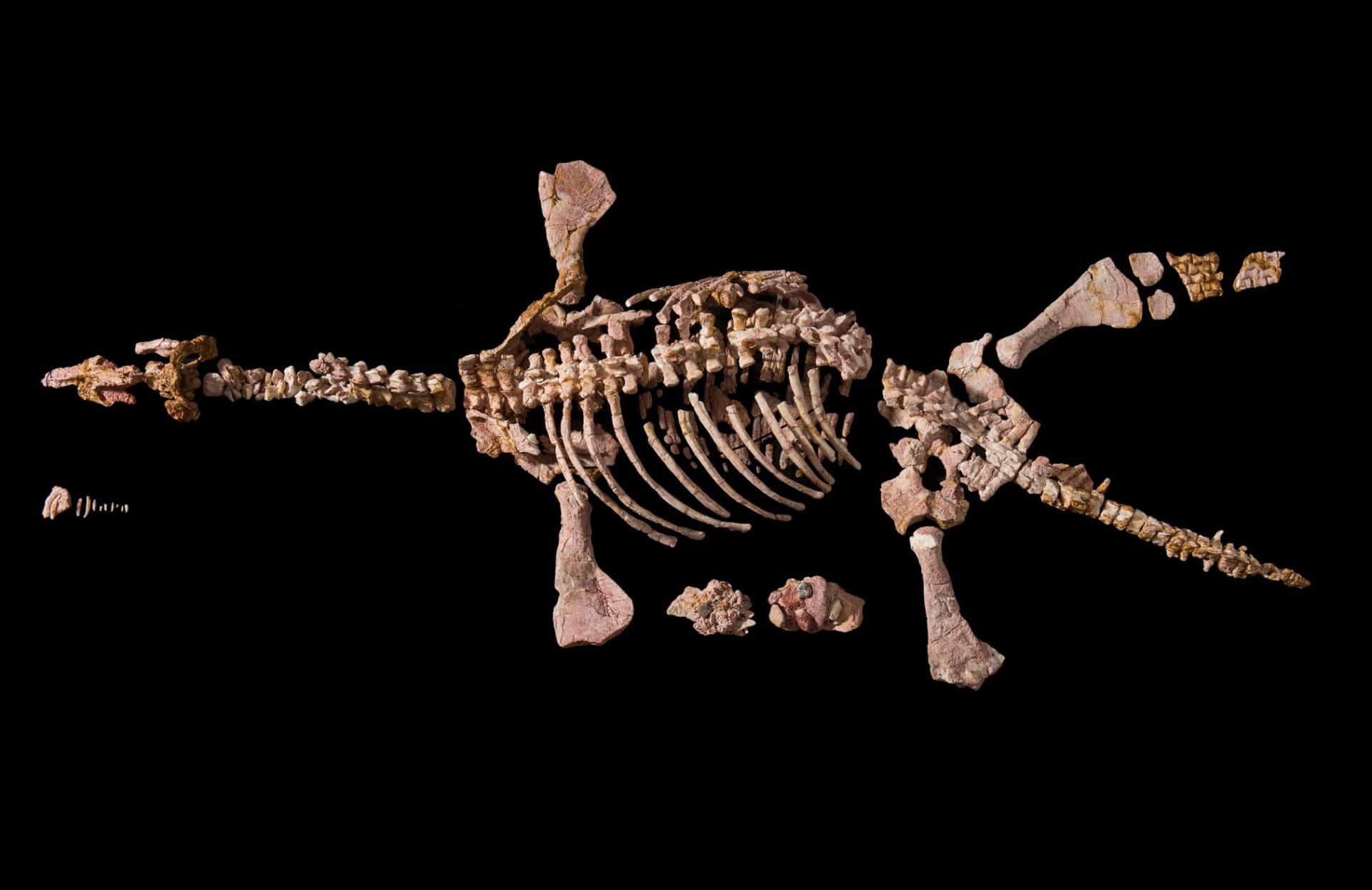
Opal is found commonly around the world, but precious opal is very rare and geologists say nothing compares to that produced in Central Australia. Opalized fossils have likewise been found at other opal fields in Australia, but Lightning Ridge stands out for preserving the greatest diversity of extinct freshwater and land-living creatures, including dinosaurs galore. A hundred million years ago, the now-arid interior of Australia was flooded by a vast inland sea and Lightning Ridge sat on its edge. As the sea retreated, the leading theory goes, it exposed a peculiar mix of sediments forming a sandstone laced with reactive minerals. Rocks nearer the surface began to weather, producing a groundwater rich in silica. It lay in cracks in the rock and filled any cavities, including the skeletal remains of dinosaurs and other long-extinct creatures.
Elizabeth Smith, a paleontologist who has studied the opalized fossils of Lightning Ridge for decades, has seen it all: shark’s teeth, turtle bones, lungfish, pinecones, birds, marine reptiles, plus all sorts of dinosaur bones and teeth. Teeth are the most revealing, Smith explains, particularly the ones comprised of so-called common opal, which lacks the brilliant color of precious opal but may be translucent. “To be able to see the very fine-scale anatomy inside the tooth, the serrations, is really something,” she says.
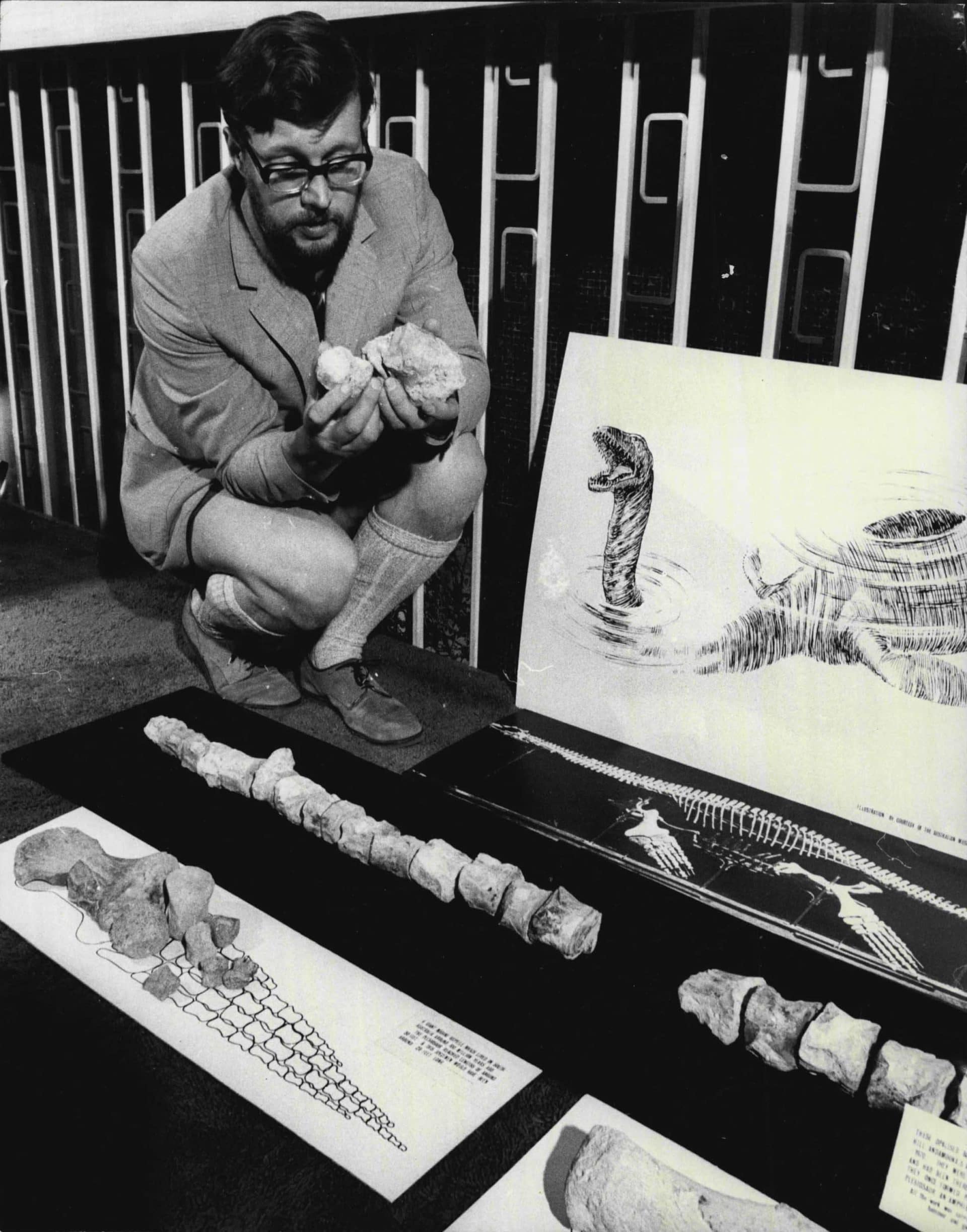
Australian scientist Alex Ritchie examines the partial remains of a 100-million-year-old plesiosaur in 1971. Opal miners Mr. and Mrs. John Addyman took three years to unearth the fossil bones at Hallion Hill, Andamooka, in South Australia.
Visual: Stuart William MacGladrie/Fairfax Media via Getty Images
Smith was first drawn to the Ridge in the 1970s, long before the Australian Opal Center was even a whisper on the horizon. She later moved to live there permanently when opal mining was booming in the ’90s. While her husband was digging for opal, Smith was searching for fossils. Now, alongside Brammall, she is working to find a way forward where opalized fossils benefit the whole community. The pair talk often and openly with opal miners about the wondrous fossils of Lightning Ridge so that people appreciate just how extraordinary they are. Still, Smith says, over the years, she has seen some “mighty important” fossils held in private hands, or sold overseas.
Speak to any opal miner and they’ll be quick to tell you their treasures are hard-won. Opal mining is grueling work, physically and emotionally, and “a good way to go broke very quickly,” says Kelly Tishler, a third-generation miner from Lightning Ridge. Miners mostly work alone or in pairs, and many live off-grid in self-made shacks or caravans on their mineral claim, a small plot of government-owned or private land where miners hold an exclusive license to prospect and mine for opal. Some have secondary businesses to supplement their income. Petar Borkovic, for example, runs Outback Opal Tours with his wife. “But I’m an opal miner. It’s in my blood,” he says, grinning through the noise at the Sheepyard Inn, a pub in the middle of the Grawin opal fields, southwest of Lightning Ridge.
Before the Australian Opal Center was in town, specimens of interest that had been acquired from miners were sent to far-away natural history museums, including the Australian Museum in Sydney, where two of Lightning Ridge’s most famed fossils reside. Steropodon galmani was the first mammal from the Mesozoic Era found in Australia, and Kollikodon ritchiei, the second. Taken together, they hint at the diversity of Australia’s early mammals. These tiny specimens, little more than an inch long, are immensely important, says Matthew McCurry, curator of paleontology at the Australian Museum. “They’re [among] the earliest representatives of mammals here in Australia,” McCurry explains, and, when they were discovered, the oldest trace of monotremes in the world.
“Any opal specimen is of immense scientific value” because it offers a unique window into Australia’s past, says fellow paleontologist Paul Willis, an adjunct associate professor at Flinders University in South Australia. Our imagination might run wild with the dinosaurs that roamed through the Jurassic and into the Cretaceous, but mammals also proliferated during that time, including the ancestors of Australia’s unique egg-laying monotremes, the platypus and echidna.
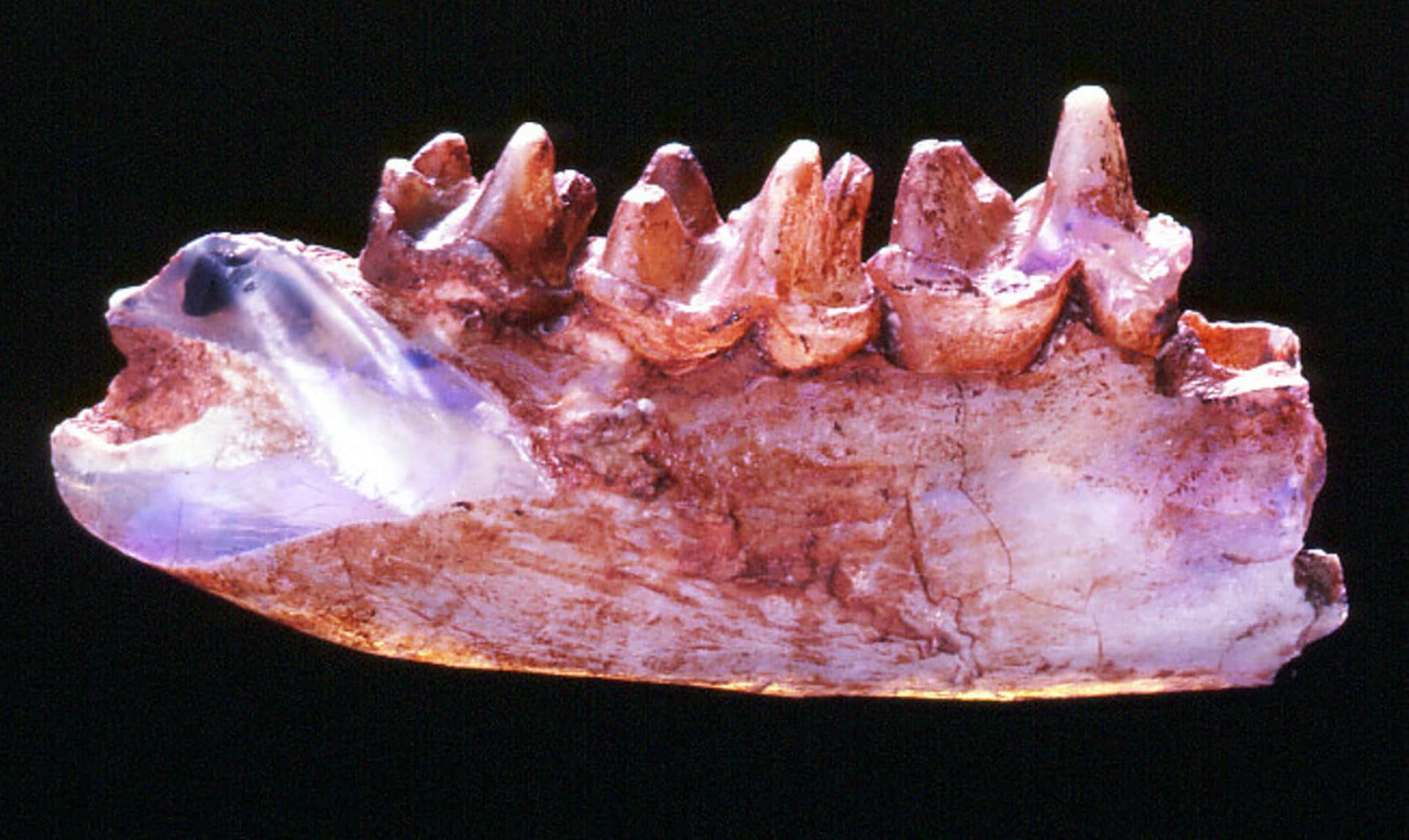
Willis knows all too well how fortunate scientists and all Australians are to have these specimens in public collections. As a Ph.D. student at the University of New South Wales in the 1980s, he was tasked by the Australian Museum with reconstructing the fossilized skeleton of a small marine reptile, a pliosaur, which had been haphazardly excavated by opal miners in Coober Pedy in South Australia. Eric, as the pliosaur was nicknamed, remains the most complete opalized vertebrate fossil skeleton found to date, but it arrived, unceremoniously, at the museum in a box. A wealthy property developer had purchased the skeleton and was paying for it to be prepared for display. That is, until he went bankrupt. Suddenly, Eric was up for grabs. A public fundraising campaign raked in more than 500,000 Australian dollars so that the museum could acquire the national treasure and put it on show.
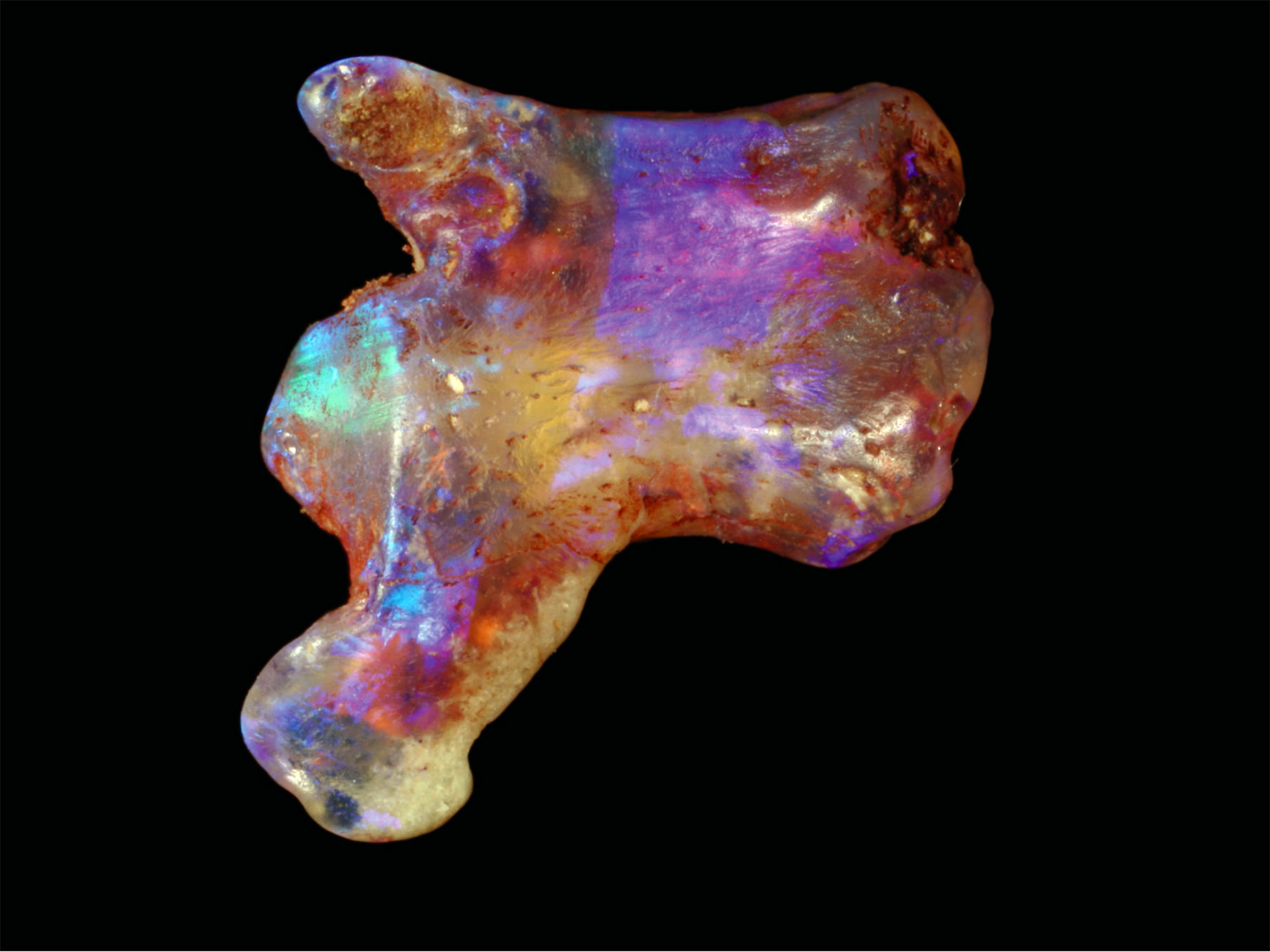
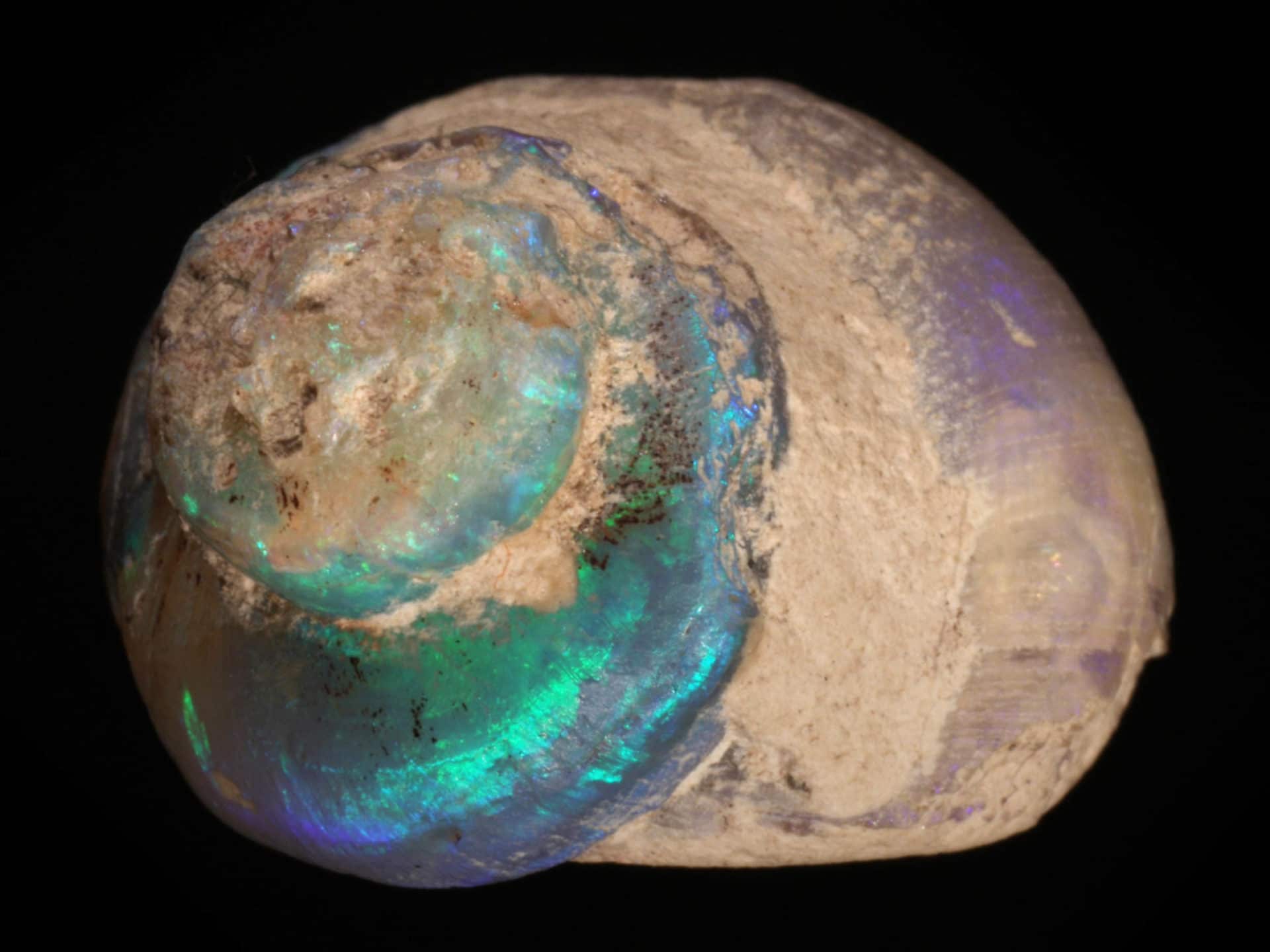
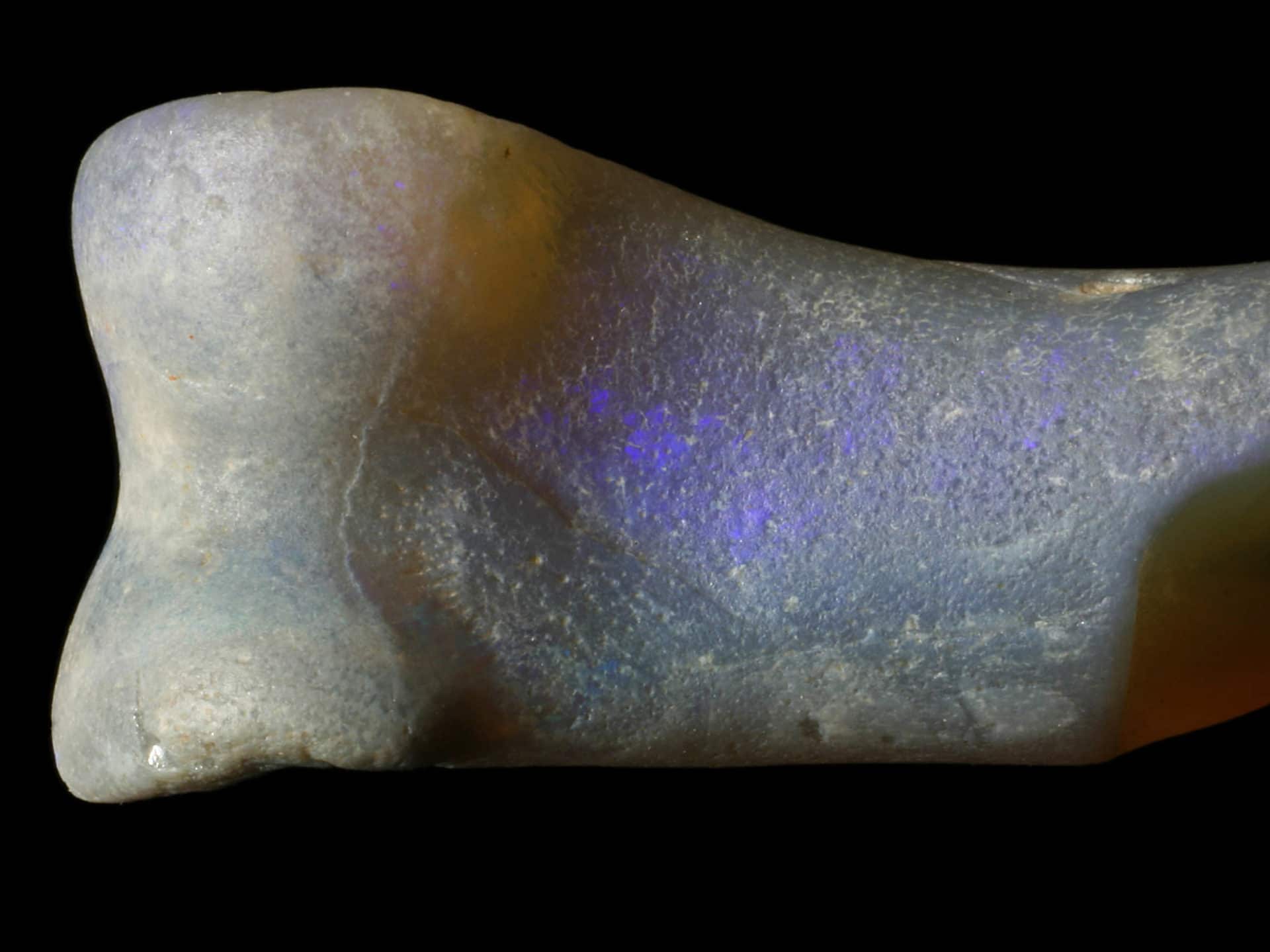
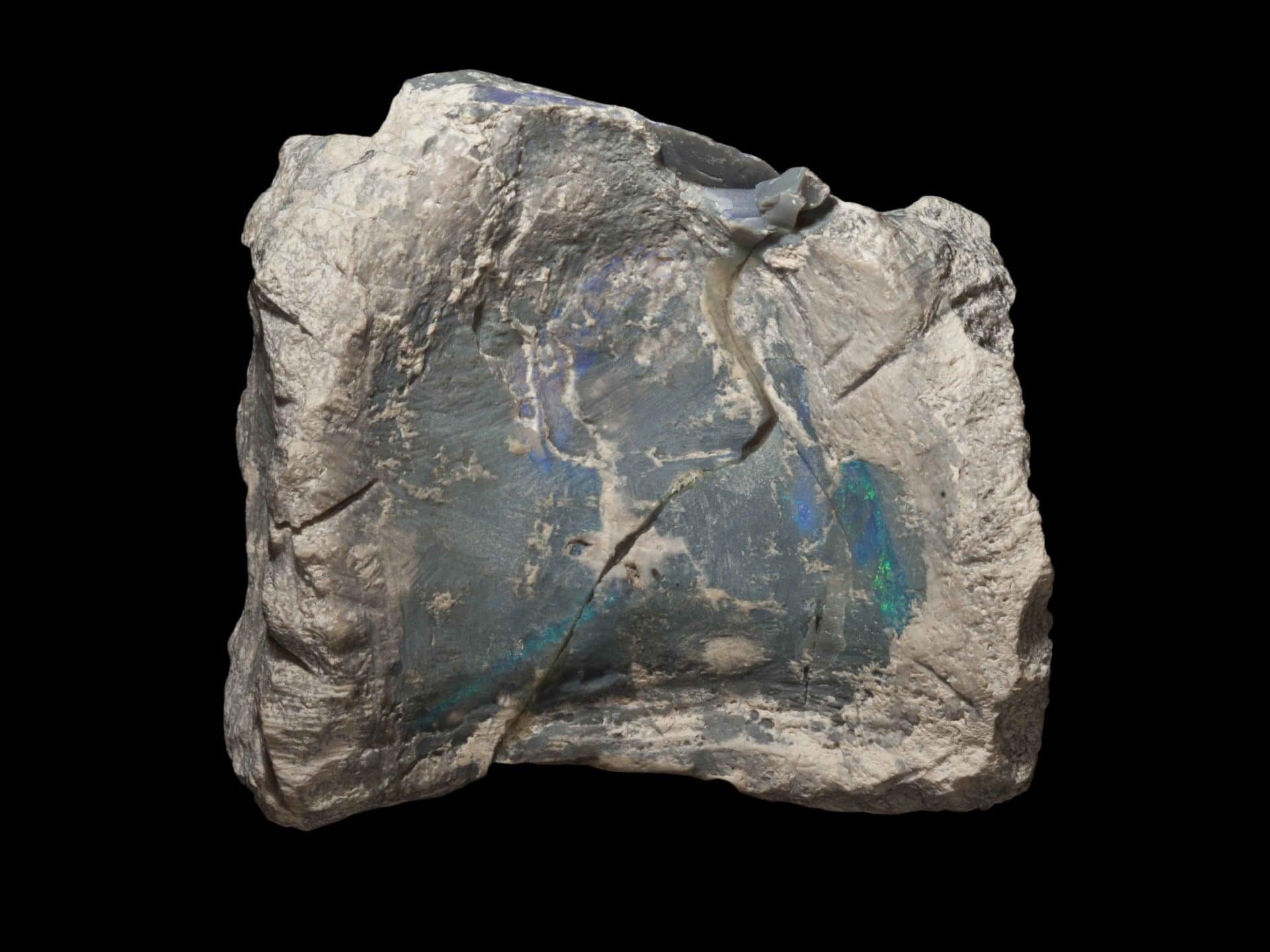
It has taken similarly sizeable sums to secure other one-of-a-kind opalized fossils so they can be duly recognized in public collections and protected for generations to come. The first mammal from the Mesozoic Era found in Australia, Steropodon galmani, was purchased by the Australian Museum in 1984 as part of a collection of opalized fossils from opal dealers David and Alan Galman for AU$80,000. The second, Kollikodon ritchiei, on its own, had an AU$10,000 price tag.
More than 80,000 people visit the Ridge each year, a number that continues to rise. Many come specifically to see the opalized fossils on display at the Australian Opal Center. One morning in late April, the showroom is crowded with groups of people hovering around the display cabinets. Several visitors approach Smith to ask about Weewarrasaurus, having come all the way to Lightning Ridge for the dinosaurs and hoping to see the latest gem in the center’s collection.
Just last year, a new species of plant-eating dinosaur was described from an opalized jawbone with a few ribbed teeth intact that was found near Lightning Ridge. It was named Weewarrasaurus pobeni for the opal dealer, Mike Poben, who generously donated the sparkly specimen to the Australian Opal Center after he discovered it, miraculously, in a bag of rough opal purchased from miners from the Wee Warra opal field. After meeting visiting paleontologist Phil Bell, who knew immediately it was something extraordinary, Bell says Poben decided to donate the fossil “to make sure it became known to the world.”
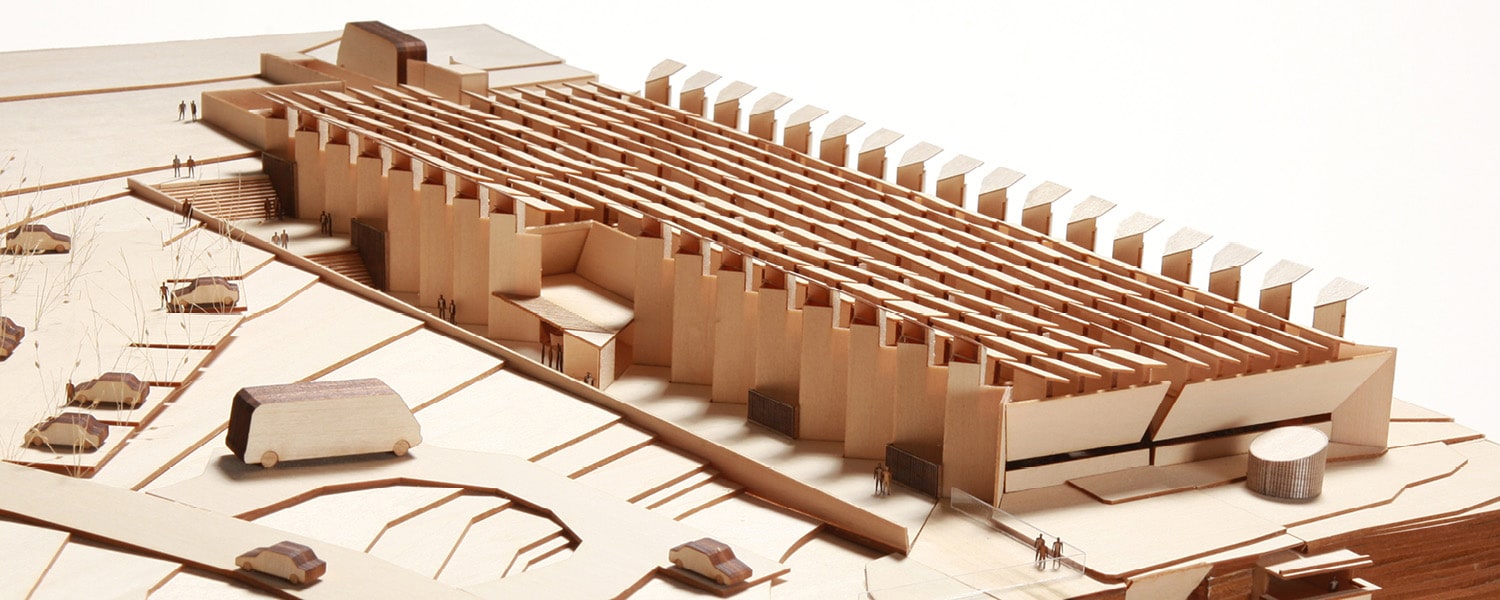
“Having the Opal Center in the town as part of the community is absolutely vital to safeguarding these treasures,” says Bell, a lecturer at the University of New England in Armidale, New South Wales, Australia. There is a very real concern amongst people in Lightning Ridge that their fossil material stays in its place of origin, adds Smith. The community, she says, understands the scale of what has been lost. “The material has been coming out of the ground the whole time the miners have been digging,” but the presence of fossils — and their scientific value — has only come to light gradually over the last few decades.
Brammall and Smith share their expert fossil knowledge with the miners who bring them to the Australian Opal Center, asking for help to identify a specimen, so miners can understand the history they hold in their hands. The miners often have outrageous ideas about what they’ve found, which Smith says is all part of the fun, but every now and then, someone brings in something “really significant.” From her wallet, she retrieves a tiny opalized tooth that she has on loan from an opal dealer. Smith thinks it is a crocodile tooth but points out the unusual features at its base. It will be photographed and then returned to the owner. “Whether or not it comes into the collection, I’ve got no idea,” she says.
“We rely on the miners — and for them to do the right thing,” Smith says. Alas, opalized fossils continue to be sold on daily basis as highly-prized collector’s items, and paleontologists are unable to recover them. Money has always been the problem. Having spent tens of thousands of dollars to keep digging, their savings sunk into machinery and fuel, few miners are in a position to hand over opalized fossils, and museums have, for decades, lacked the necessary funds to purchase them at fair prices. “We are losing our cultural heritage because we do not have the funds to secure these opal fossils,” attests Willis.
Exporting opalized fossils from Australia without a permit is outlawed under the Protection of Movable Cultural Heritage Act of 1986, but the biggest markets for opal are outside of Australia and a miner might just be looking to make ends meet. In dire times, things get unsentimental. “One thing about opal mining is you can’t tell another opal miner what to do with his [or her] opal,” declares Tishler, gazing out at the rocky ridges from the overturned Three Mile opal field, one of the first fields in the area. A self-confessed “fossil nut,” Tishler says she has her own private collection of opalized fossils, which she plans to bequeath to the Australian Opal Center, but she also admits to selling her grandmother’s opal jewelry in times of hardship.
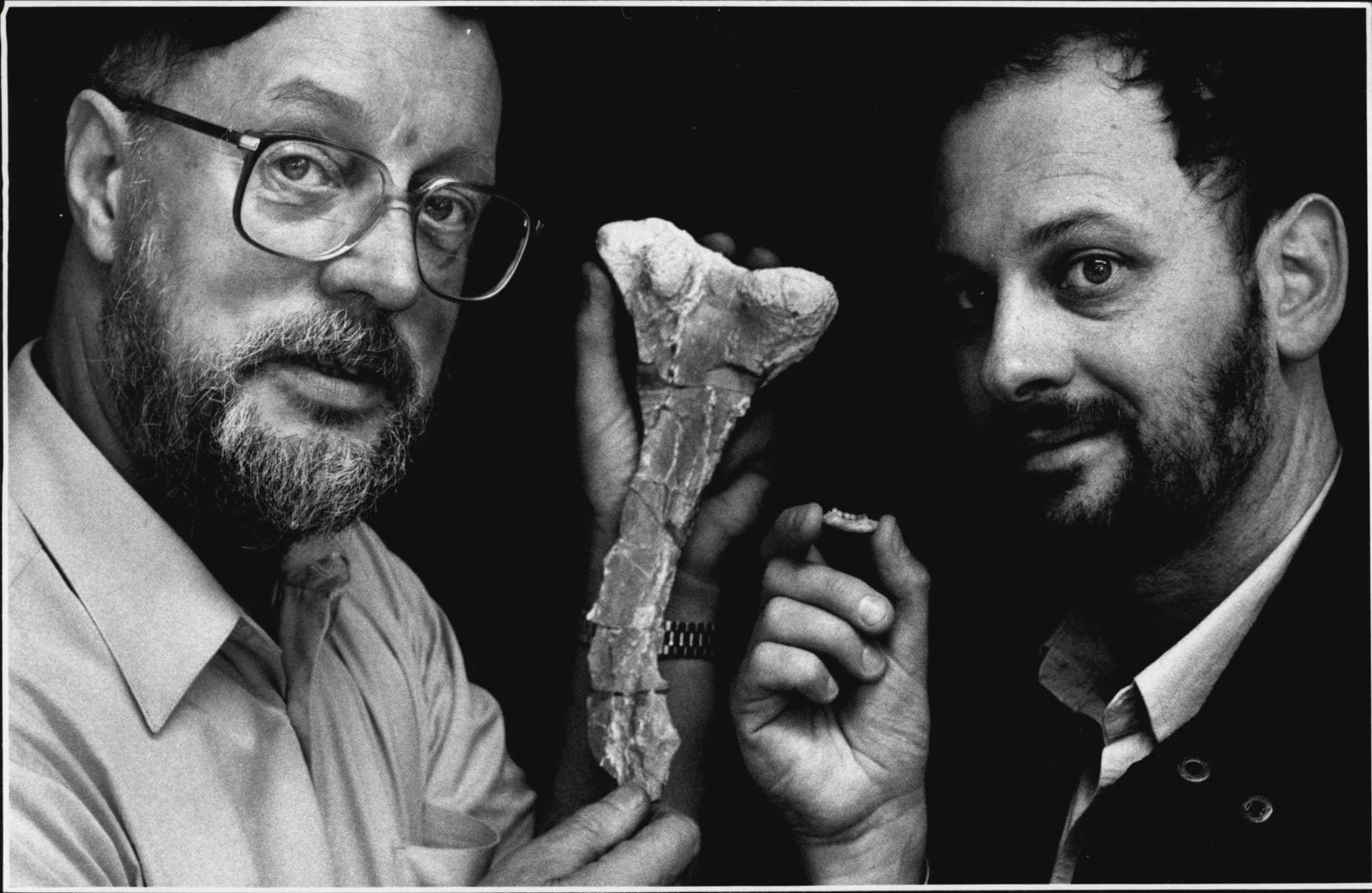
Brammall and Smith focus on what they can do for the Lightning Ridge community, not what has been lost. “We gain more than we lose,” says Brammall of their efforts, which start with regarding miners as collaborators and treating them with the respect they deserve. Encouragingly, one major opalized fossil haul from the Ridge, an assemblage of dinosaur bones, including the world’s most complete opalized dinosaur skeleton, recently came into the collection 31 years after it was first discovered. In the future, an acquisition fund would mean that the Australian Opal Center could respond swiftly and need no longer rely on limited federal funding when such treasures are on offer.
But the first step has been to secure backing for the world-class facility that will house and display the growing Australian Opal Center collection. It is hoped that the museum heralds a new future for Lightning Ridge, one that recognizes the deep history of the land and the legacy of opal mining alongside the celebrated opalized fossils while drawing new visitors to the remote town and providing a long-awaited global hub for opal-related science and education. With funding from local, state, and federal governments — and a significant contribution from the community itself — the new center has been designed by renowned Australian architects and construction will be soon be underway.
For Smith, the new museum represents a long-held promise to the community. She knows of a few fossils of major scientific importance out there in private hands, which others agree would be “game-changing” in their respective fields. Smith keeps the specimens in her sights, tantalizingly close, believing that the new Australian Opal Center will embolden more people to share their fossil collections.
“They want their fossils safe,” Brammall says, “in a public collection, on the opal fields.”
Clare Watson is an Australian writer and freelance journalist specializing in science. Her work has appeared in, among other publications, Australian Geographic, Smith Journal, and Lateral Magazine, and aired on ABC Radio National (Australia).
UPDATE: An earlier version of this story referred incorrectly to a pair of opal dealers who sold fossil specimens to the Australian Museum in 1984. They are David and Alan Galman, not David and Alex Galman. This story was also originally published without full caption information for some photos. This information has been added. Additionally, the caption for the photo of Alex Ritchie and Tim Flannery incorrectly referred to both fossils as belonging to early mammals. It has been corrected.








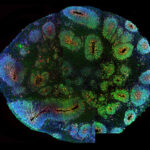

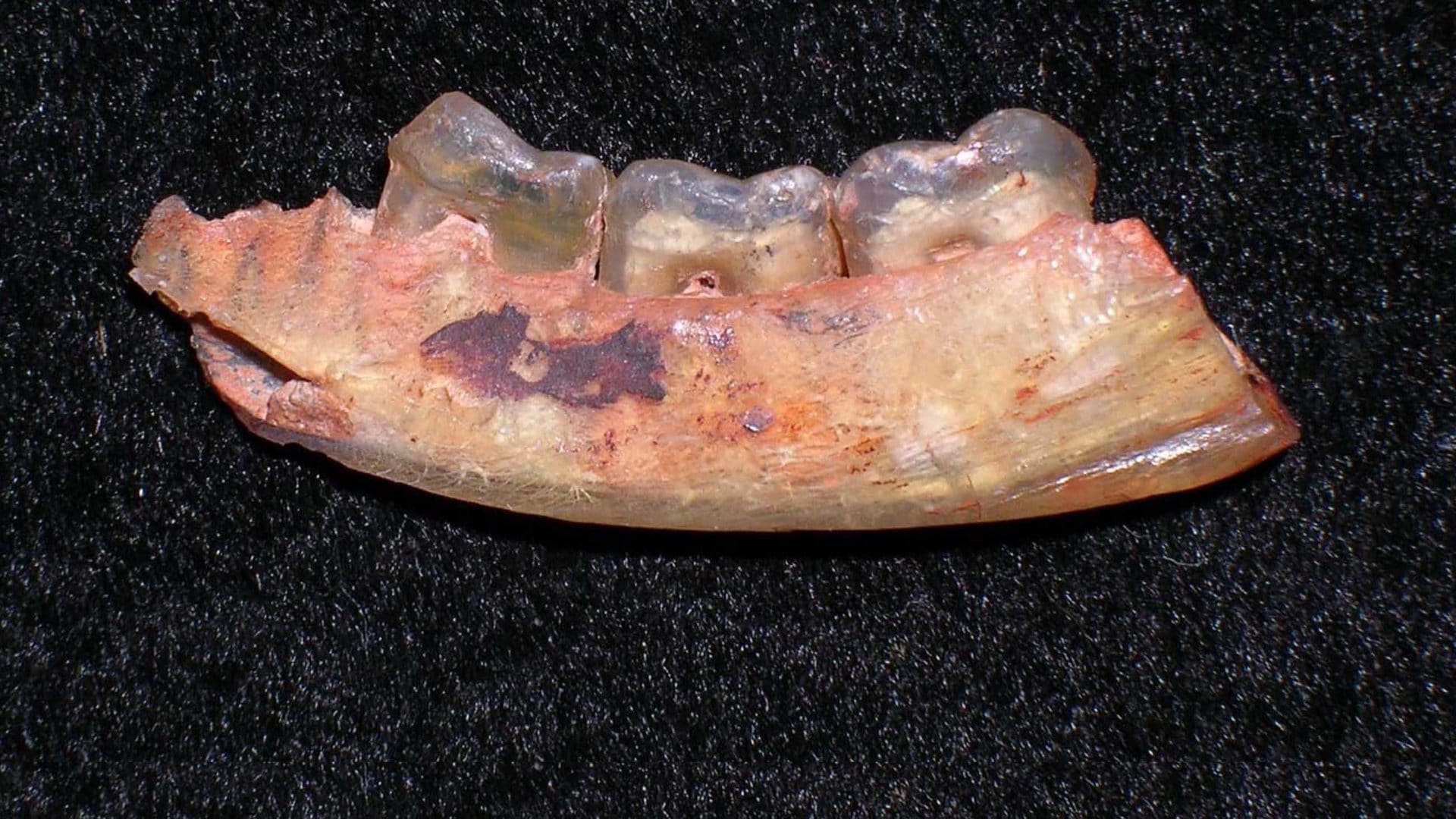
Comments are automatically closed one year after article publication. Archived comments are below.
Loving both opals and fossils, this article made me want to donate to the construction of this new museum. They have a crowdfunding portal for donations at http://australianopalcentre.gofundraise.com.au .